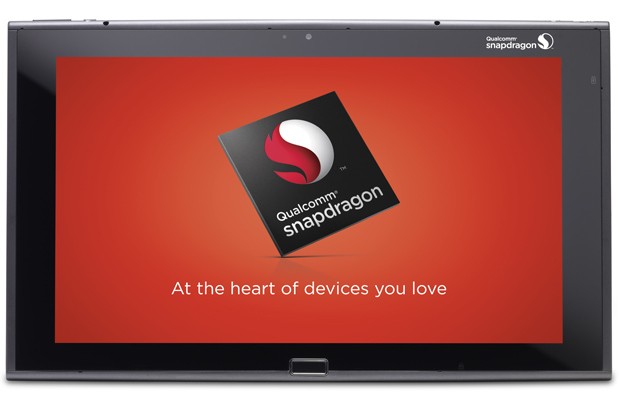Qualcomm is taking its system-on-a-chip (SoC) technology to the big screen, introducing the Snapdragon 802 processor for smart TVs and set-top boxes.
And it’s looking to put another Snapdragon in your car.
The processor offers a custom Android software framework based on Android 4.4 KitKat, and it promises to rapidly decode Ultra HD content (that’s 4K resolution, if you’re keeping score), send content wirelessly to mobile devices, and play up to four HD videos at the same time on the same screen. (Because everyone does this, you know.)
The Snapdragon 802 packs a quad core 1.8GHz Krait CPU and an Adreno 330 GPU. Media streaming comes care of dual-band 802.11ac Wi-Fi, and Qualcomm’s open-source AllJoyn software connectivity framework offers interoperability for hardware powered by Qualcomm’s new SoC and other connected devices, potentially paving the way for software and multiplayer games split across multiple connected devices.
That last bit is decidedly more interesting than watching four times as many YouTube videos at the same time. Television sets equipped with Qualcomm’s new CPU could potentially serve as a sort of standalone gaming console. And it won’t necessarily be a slouch, either: The processor’s specs aren’t far off from the hardware in tablets like the Kindle Fire HDX. We’ll need to wait until Snapdragon 802 devices trickle out later this year, but the right hardware at the right price could shake up the GameSticks and Ouyas of the world.
Your television set is the only piece of equipment getting a bit of CPU-love: the Snapdragon 602A processor offers a quad-core Krait CPU, Adreno 320 GPU, and it will live inside an in-car infotainment center near you. The processor is capable of serving up 3G and 4G LTE connectivity, dual-band 802.11ac Wi-Fi, and Bluetooth LE 4.0, bringing the features and convenience we expect in smartphones and tablets to the automotive world. The processor’s mobile chipset is also capable of seamlessly connecting to a number of cell networks, potentially offering cellular connectivity around the world. Apple and Google have both expressed interest in stepping up their in-car computer ambitions, so Qualcomm’s hardware push comes as no surprise.
Qualcomm has also announced a wireless whole-home audio solution, dubbed AllPlay. It too uses the AllJoyn framework and is aimed at taking some of the frustration (and potentially, cost) out of setting up a multi-room audio experience. Consider the recently expanded Samsung Shape line or wireless hardware from Sonos: If you want to expand your home audio network, you’re stuck with whatever their brand has to offer. AllPlay proposes to instead use a network of smart devices across multiple brands and platforms, all using AllPlay technology. And several device manufacturers and streaming music services — including Altec Lansing, Rhapsody, and Panasonic — are already on board.
The Smarthome platform operates in a similar vein. It proposes using the recently announced Qualcomm Internet Processor, coupled (once again) with the AllJoyn software framework, to simplify connectivity, device discovery, and device control across home networks. This is far from the first time a group of corporations rallied around a universal standard, but as the Internet of Things becomes increasingly pervasive, Qualcomm’s efforts to to lay the groundwork (and incidentally, get its foot in the door) won’t go unnoticed.


